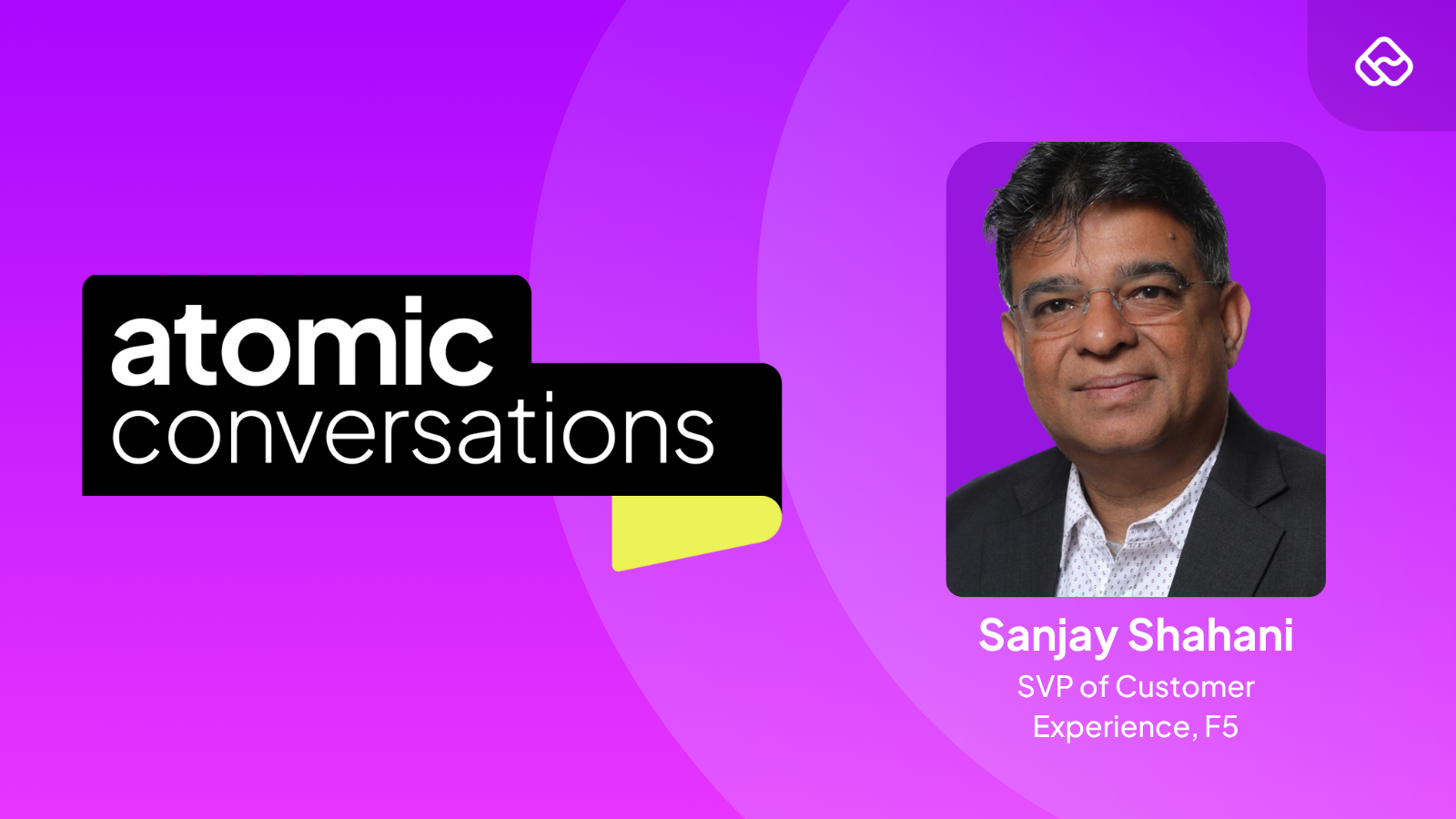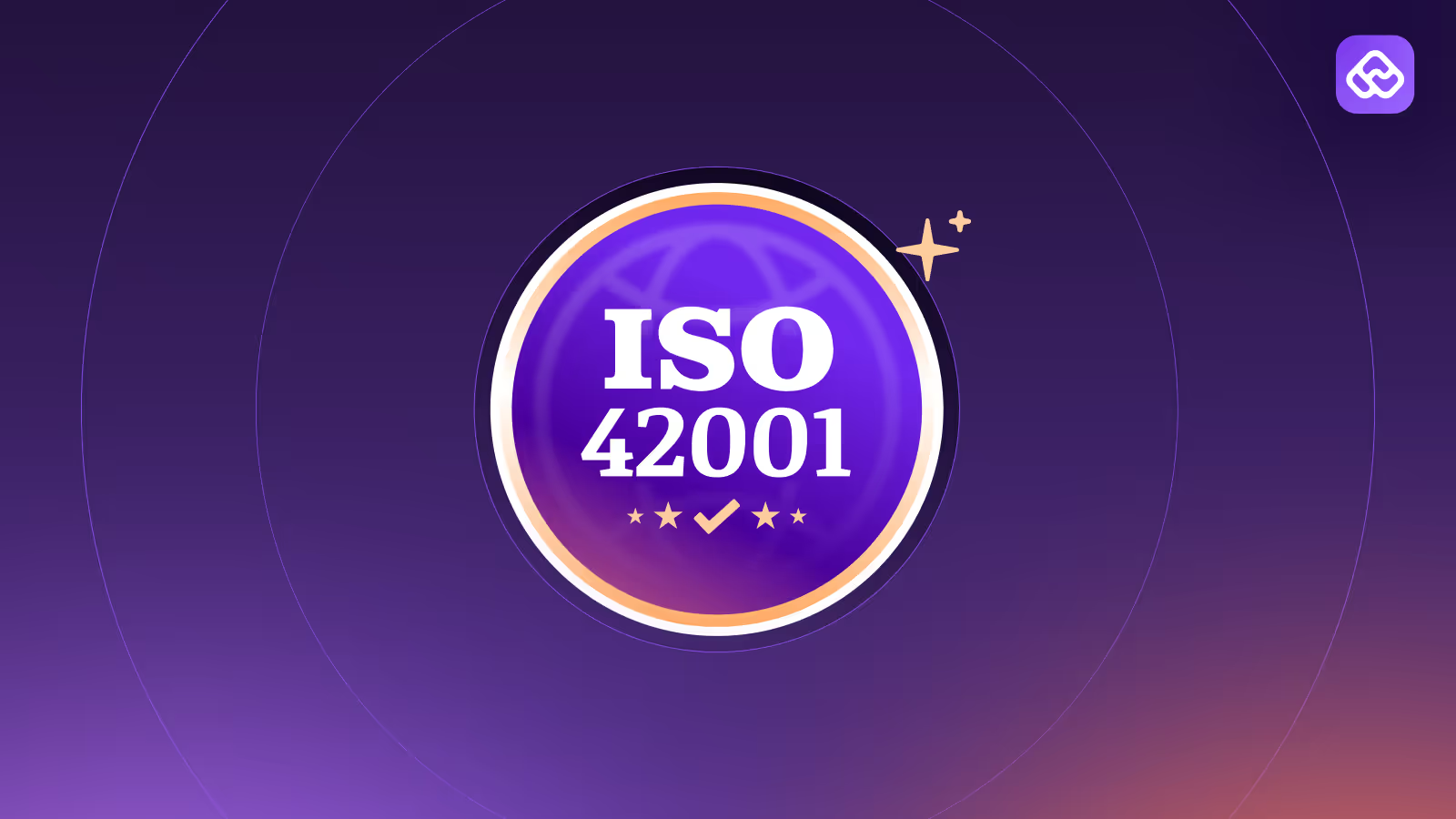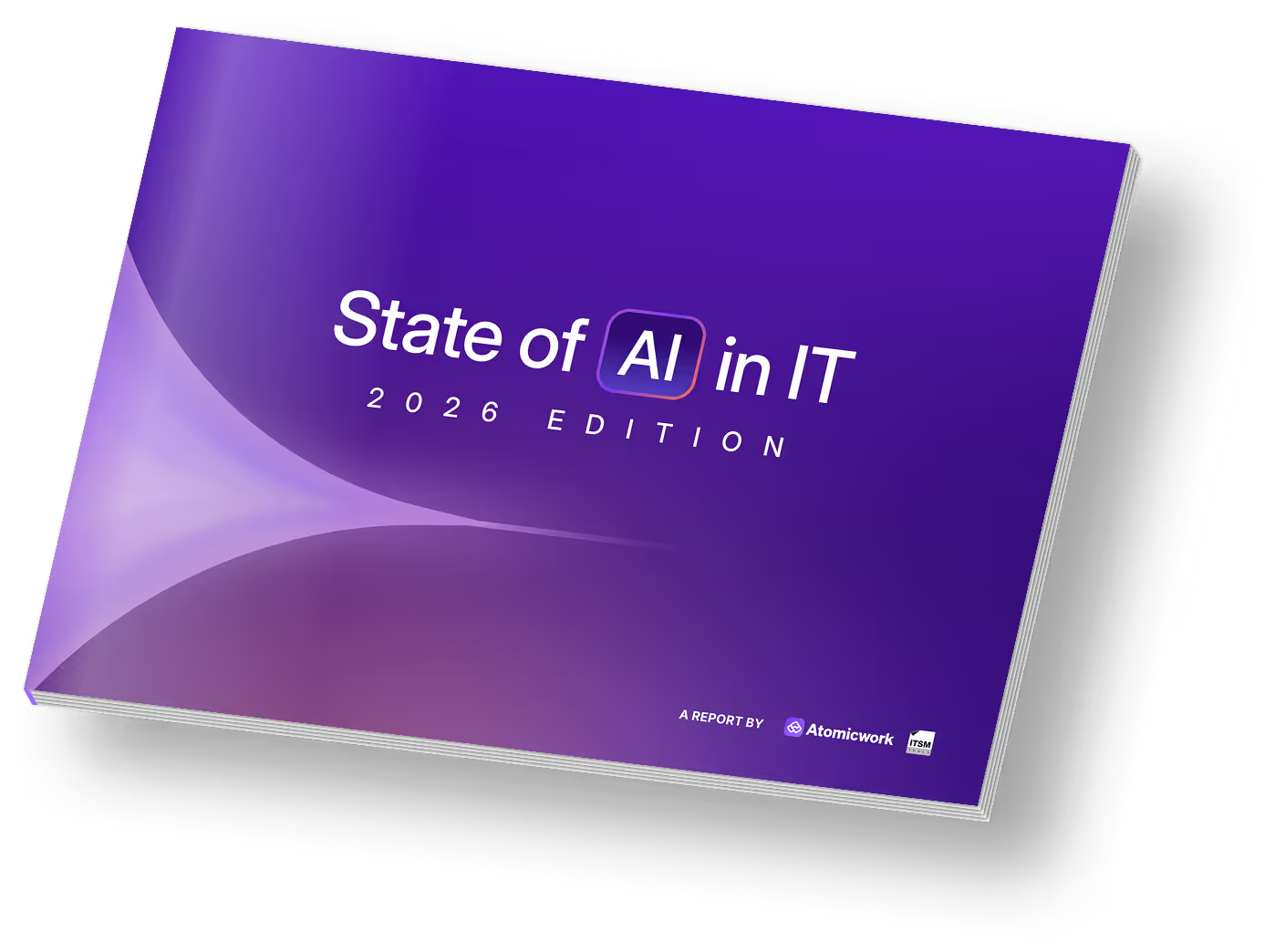Crafting the art of technology in a “Never Normal” world

In this episode of Atomic Conversations, I had the privilege of sitting down with Sanjay Shahani, SVP of Customer Experience at F5, to explore his remarkable journey from software engineer to global technology leader. With a career spanning decades and continents, Sanjay shared profound insights on technology leadership, building high-performance teams, and thriving in an era of relentless innovation.
Read on for key takeaways from the conversation, or watch the full episode here.
From code to canvas: Technology as an art form
One of the most memorable moments in our conversation came when Sanjay described his relationship with technology through an artistic lens.
“The reason I enjoyed being an engineer… I felt that what I’m doing, nobody else can do because it’s my thinking, my way of solving a problem, and I compared it to somebody creating a picture. So, I also looked at technology as an art.”
This perspective resonated deeply with me. As a marketer who often talks about the art of communication, hearing a seasoned technologist describe engineering with the same reverence was enlightening.
Sanjay’s view challenges the common perception that technology is purely logical and mechanical. Instead, he sees it as a creative expression, a unique blend of problem-solving and personal vision that no one else can replicate in quite the same way.
The journey across industries and continents
Sanjay’s career path reads like a masterclass in adaptability and continuous learning. Starting as a software engineer, he progressed to lead engineer before making a pivotal transition to enterprise architecture. But what truly sets his journey apart is his global experience across diverse industries.
From building products for telecom companies at Bell Canada to working in retail at GAP, from understanding fintech at Visa to learning high-tech at Salesforce, and exploring security and identity at Okta, Sanjay deliberately chose to immerse himself in different business models and cultures.
“I realized that I can learn technology, but equally important, because technology is enabling business…I had to understand how different business industries are.”
His early career began in an era before cloud computing and offshore work models existed. If you needed to work on something, you had to physically be there. But Sanjay turned this constraint into an advantage.
Working in London, Singapore, Malaysia, Thailand, Germany, and the Netherlands didn’t simply add stamps to his passport; it fundamentally shaped how he approaches problems and understands business in a global context.
The shifting landscape of enterprise IT
Sanjay also offered fascinating insights into how the role of enterprise architecture has transformed over the decades. In the 1990s, before the cloud era, architecture focused primarily on standardizing technology stacks and optimizing processes to save costs. Today, it’s evolved into something far more strategic.
“Enterprise architecture has become more of an arm within a company to enable the business, not only to enable the business today, but to look at where business will be in the future and enable them.”
He emphasized a crucial truth that many technologists miss: implementing technology for technology's sake serves no purpose. Understanding the business language, as in how marketing evolves, how sales operates, enables architects to provide holistic solutions that meet current needs while remaining flexible enough to adapt to future requirements.
3 key principles to scale impact as a leader
When I asked Sanjay about his transition from individual contributor to people leader, his answer revealed the mindset that separates good leaders from great ones.
“I pivoted from IC to a people manager and a leader because I wanted to make a larger impact. As an IC, you can make an impact, but I said I need that multiplier effect.”
The shift wasn’t easy. As he candidly shared, as an individual contributor, you’re talking to a computer, building models, and making decisions independently. But leadership requires an entirely different skill set, one that no college teaches and no book can fully prepare you for.
His framework for effective leadership centers on three key principles:
1. Communication tailored to the audience: Whether pitching to a CEO in 15 minutes or conducting a detailed technical session with engineers, adapting your communication style is essential. Understanding what matters to a CFO and speaking their language demonstrates respect and builds bridges across the organization.
2. Empathy-driven decision-making: Sanjay shared his three guiding rules for any decision:
- Always put on the company’s hat when making decisions
- Make decisions based on the data points available at the time
- If you make a mistake, raise your hand and own it
“As a leader, that’s an example that I want the teams to also take, and I have always worked that way.”
3. Building high-performance teams: This means not just hiring talent, but mentoring, resolving conflicts, and creating an environment where teams can thrive.
Of course, building and leading high-performance teams looks fundamentally different today than it did when Sanjay started his career, which led me to ask him about collaboration in this new landscape.
Collaborating in a hybrid work environment
The rise of remote and hybrid work has transformed how teams interact. Sanjay offered a nuanced perspective that acknowledges both the benefits and limitations of remote work.
While remote and hybrid collaboration works fine for day-to-day operations, he believes there’s something irreplaceable about bringing teams together during critical moments. Think large transformations, major initiatives, or time-sensitive projects.
“Bringing the teams together, both from the business side as well as from the product and IT side, allows them to be in a position where they can be more agile. You can do these design thinking principles, and you can build products and MVP in a way that meets the business outcome.”
The key is being situational, understanding when proximity accelerates progress and when distributed work suffices.
Living in the ‘Never Normal’
When I asked about books or resources that have influenced him, Sanjay introduced me to Peter Diamandis’ podcast ‘Moonshots with Peter Diamandis’, and his concept of the ‘never normal.’ Peter Diamandis is the founder and chairman of the XPRIZE Foundation.
“We’re living in an era where innovation is happening so fast that there is a ‘never normal’. The moment you think that you are comfortable and I’m current, the next day you’re not because something else has been innovated.”
Beyond books and podcasts, Sanjay credited mentors as his greatest influence. Observing how they perceived situations and acted taught him invaluable lessons about leadership, both what to do and what to avoid.
The most profound impact? Developing self-awareness.
“Being self-aware where you know where your blind spots may be, so that then you can act on it is something that has made a profound impact on my career.”
The creative pursuit in technology
My conversation with Sanjay reminded me that the best technology leaders don’t just understand systems and code, they understand people, businesses, and cultures. They see technology as a creative endeavor, a means to enable business transformation, and a tool for making a larger impact.
In an era of relentless innovation where ‘normal’ no longer exists, Sanjay’s approach offers a blueprint: stay curious, embrace diverse experiences, lead with empathy, and never stop learning. Most importantly, understand that your value as a technologist multiplies when you can translate your expertise into business outcomes.
I’d love for you to listen to the full conversation here and share your thoughts.
You may also like...


































